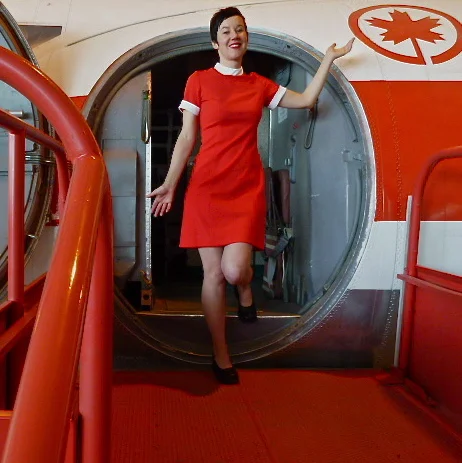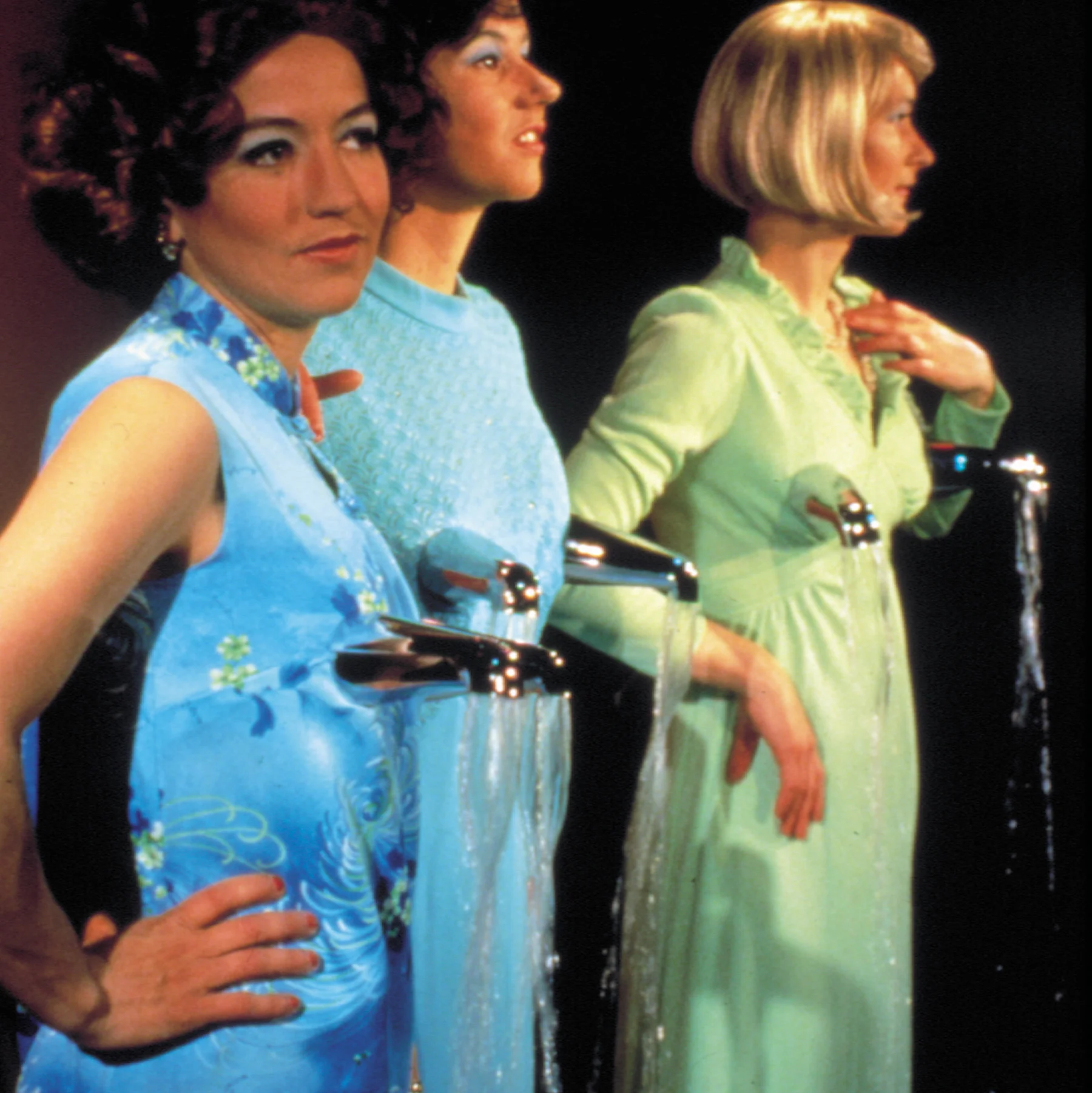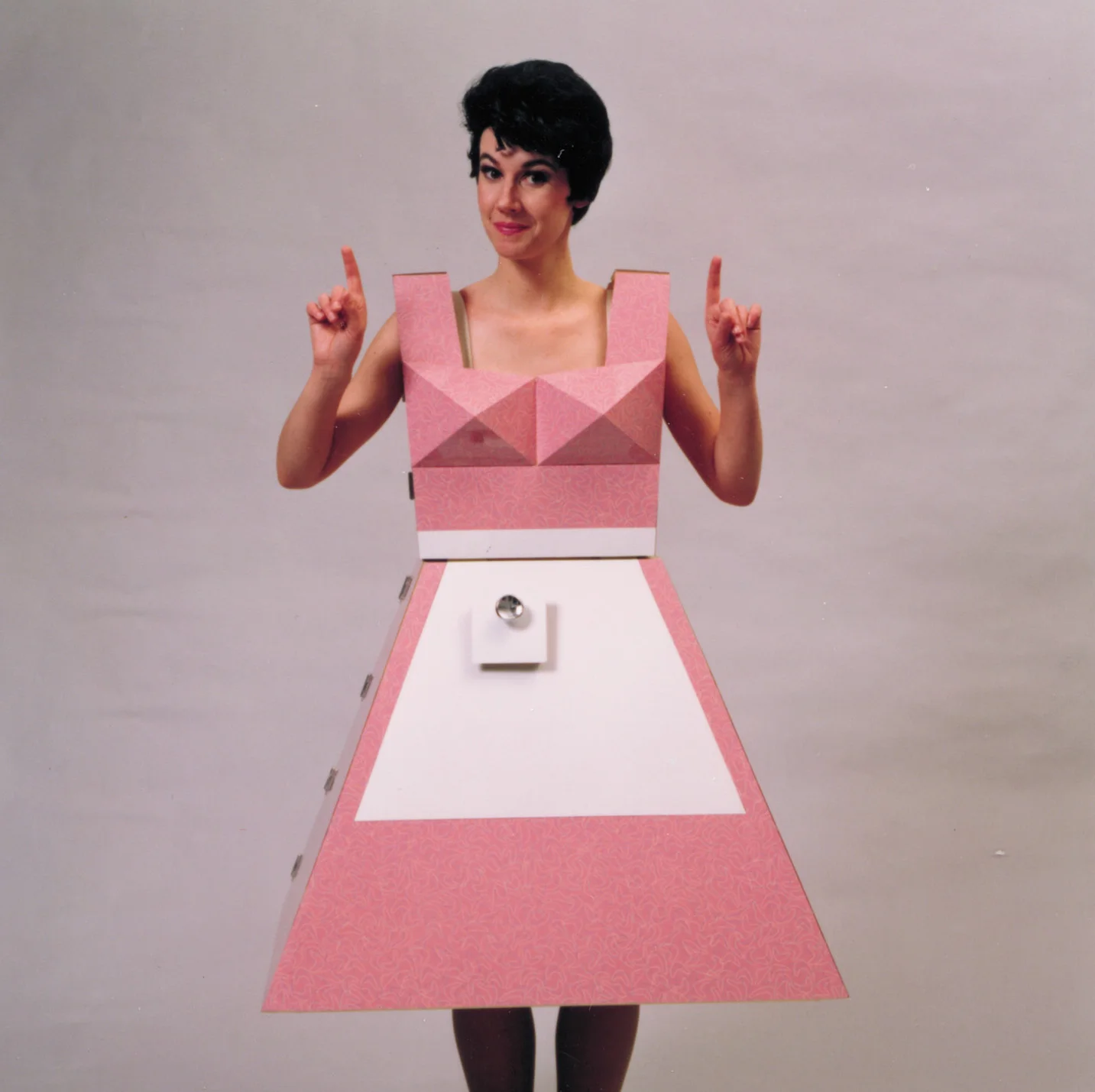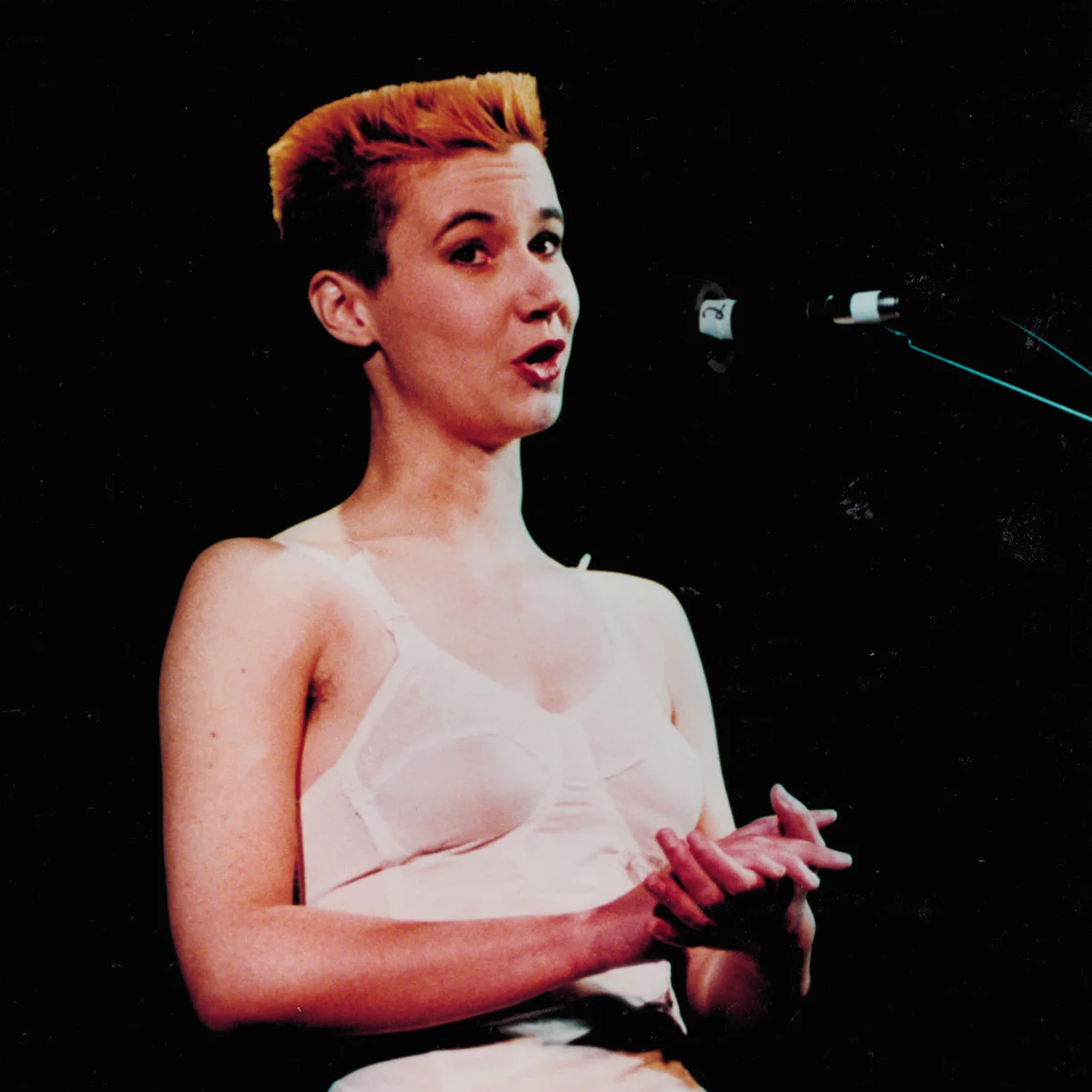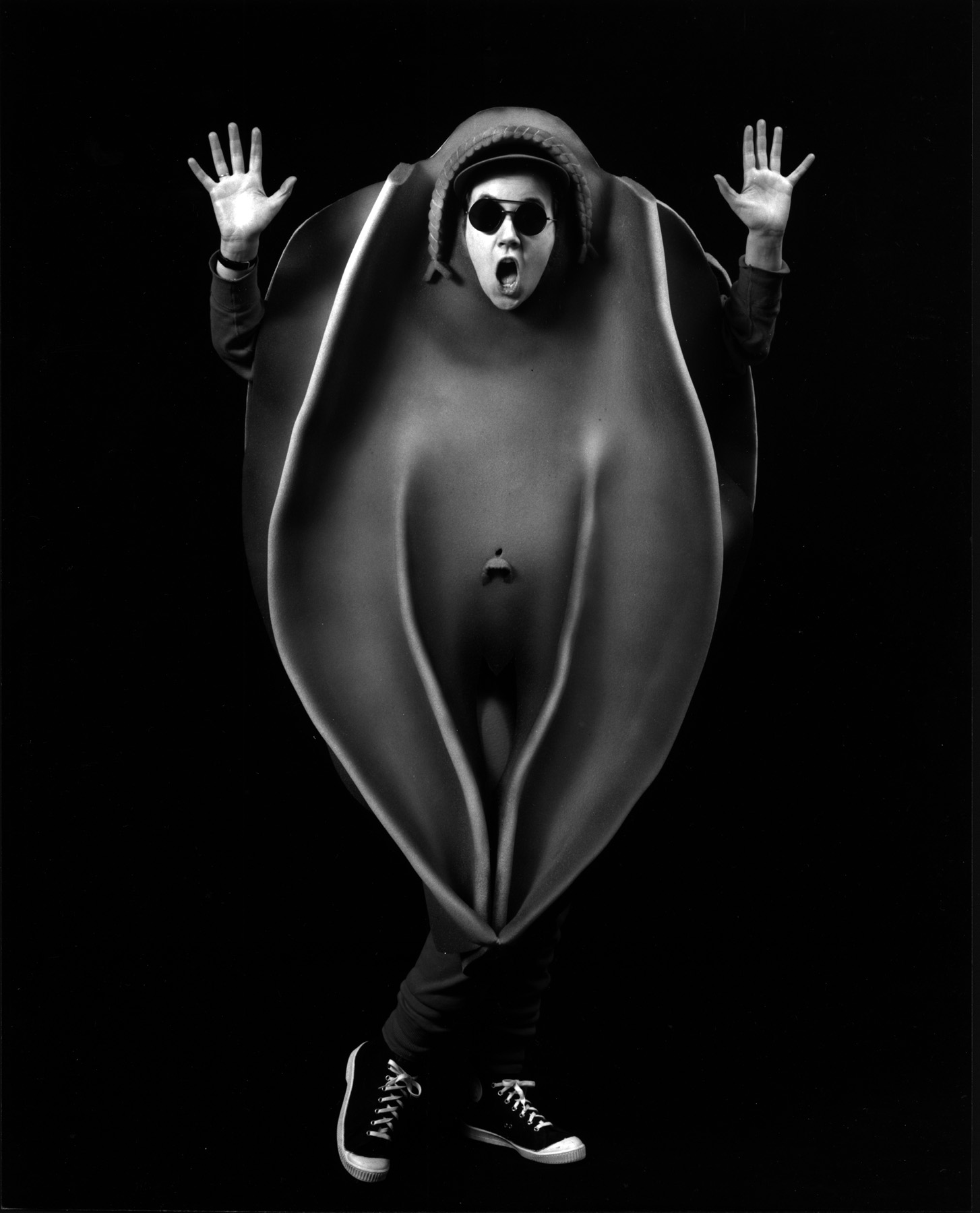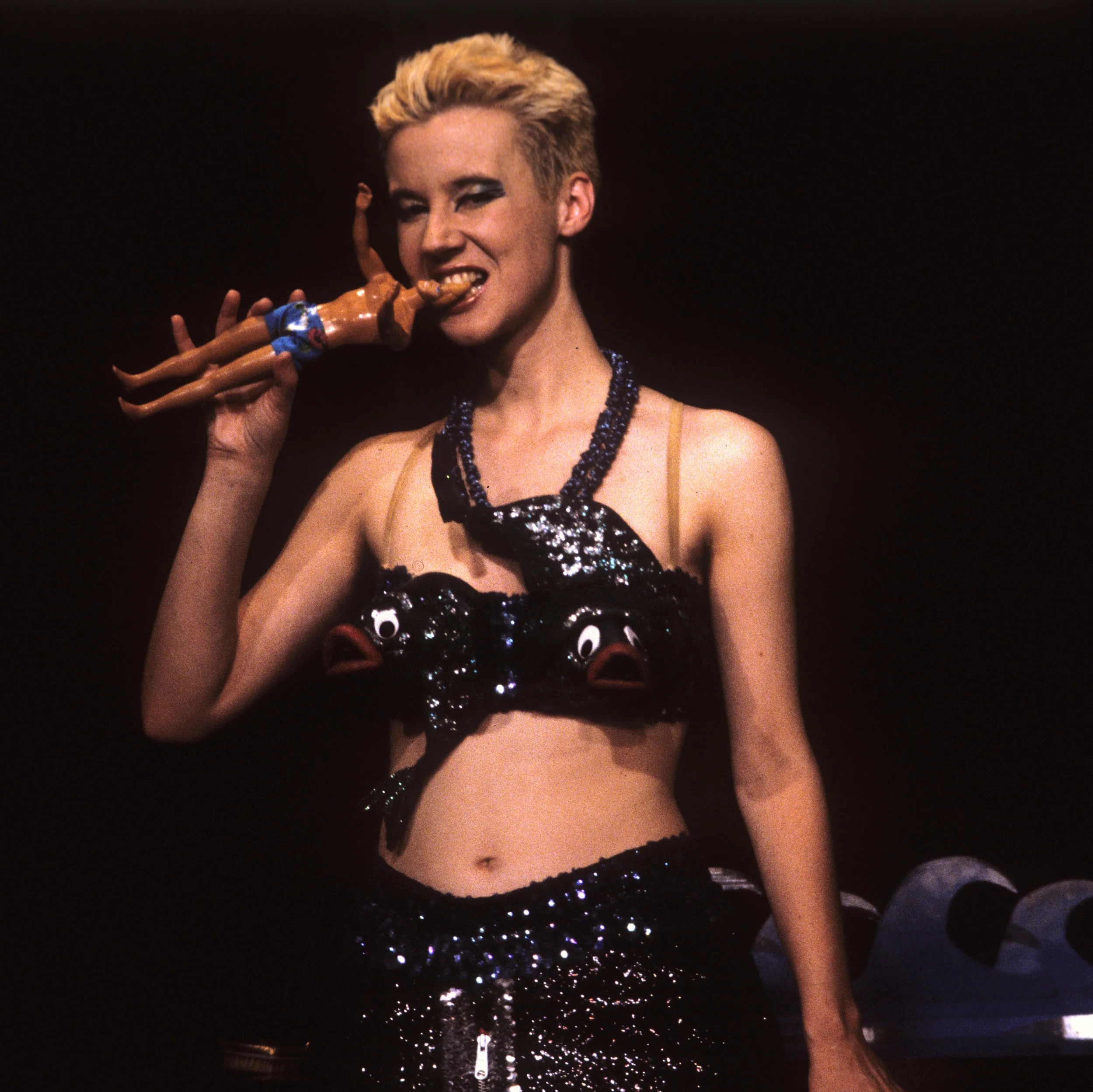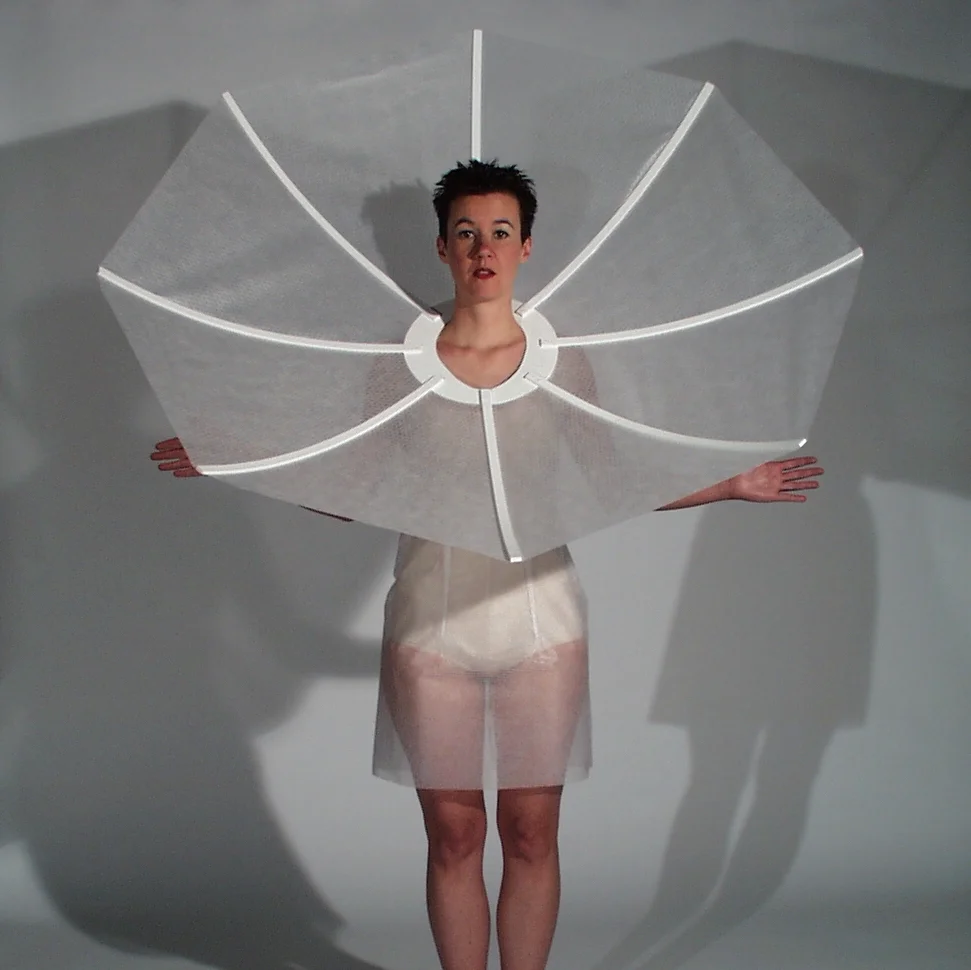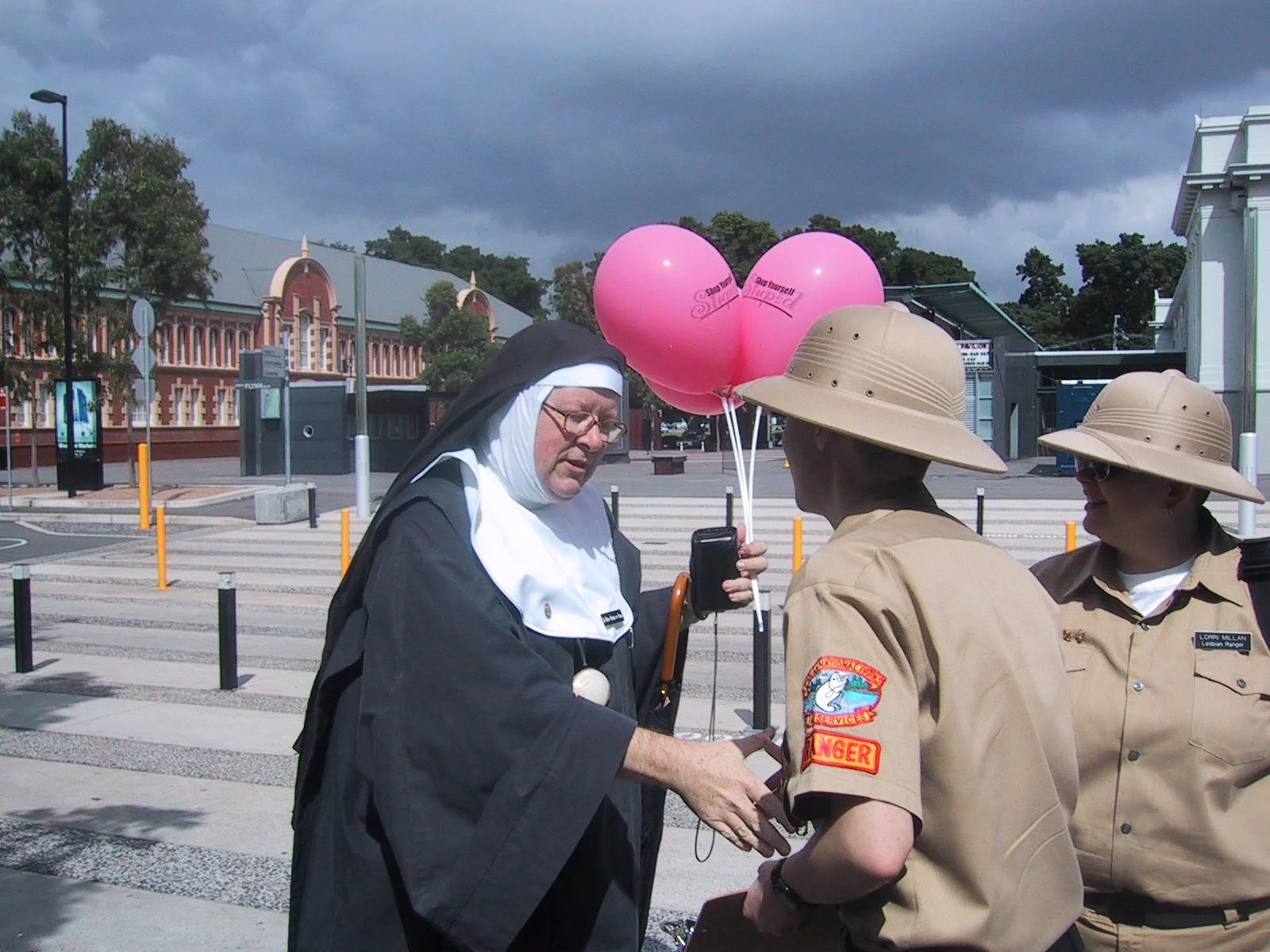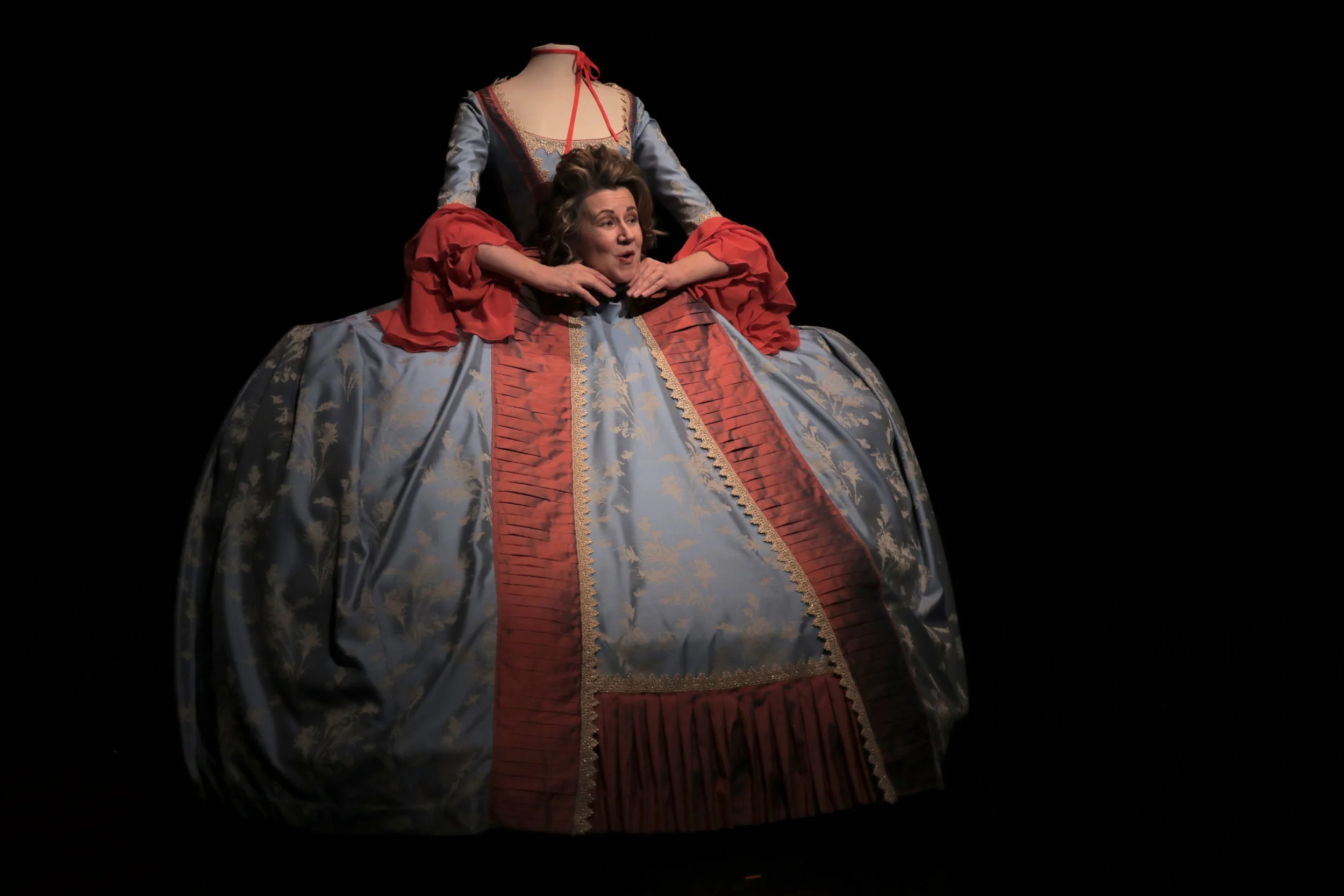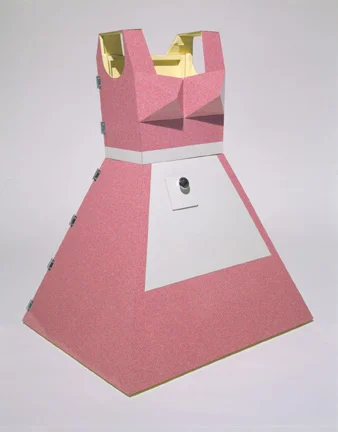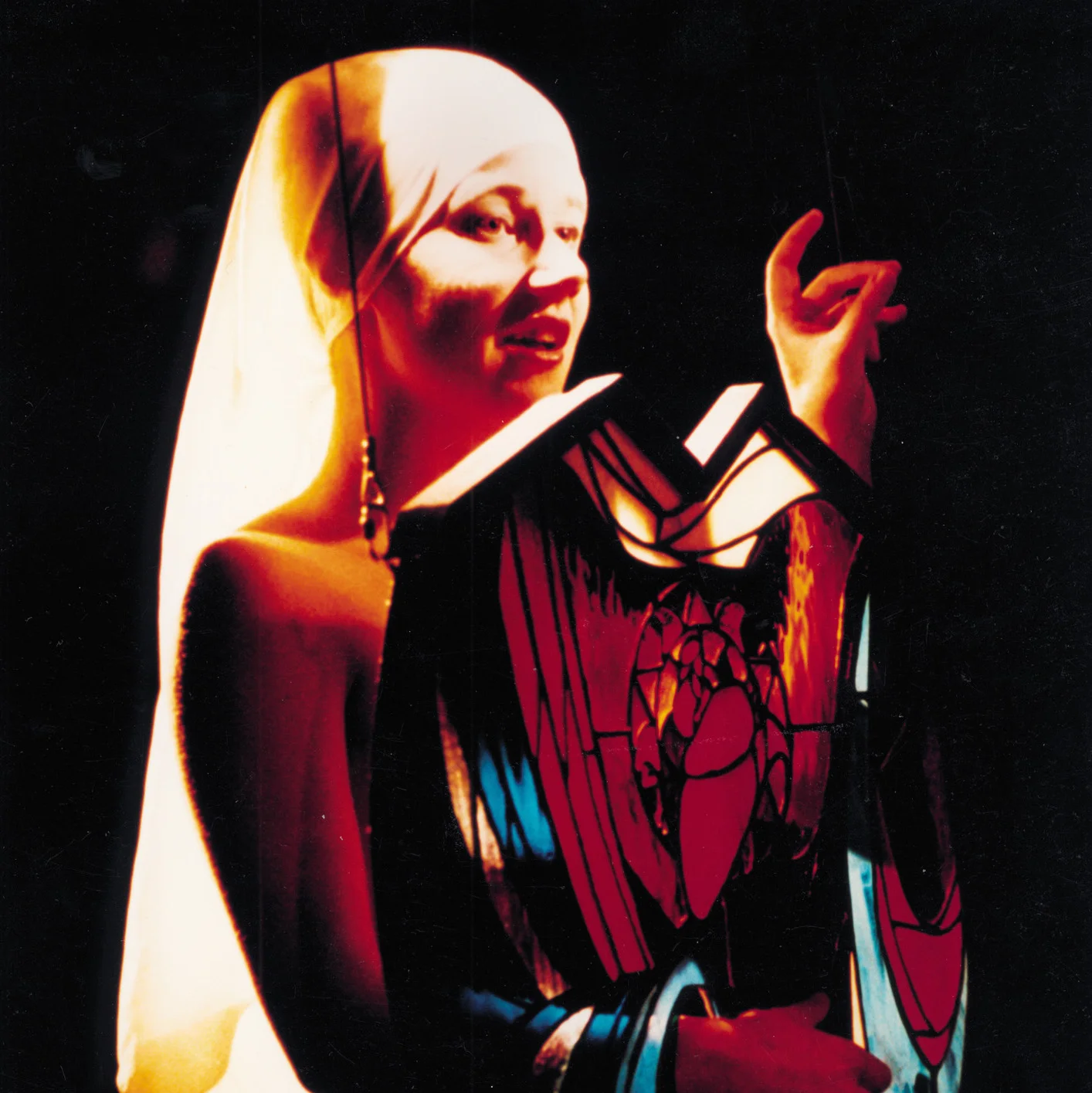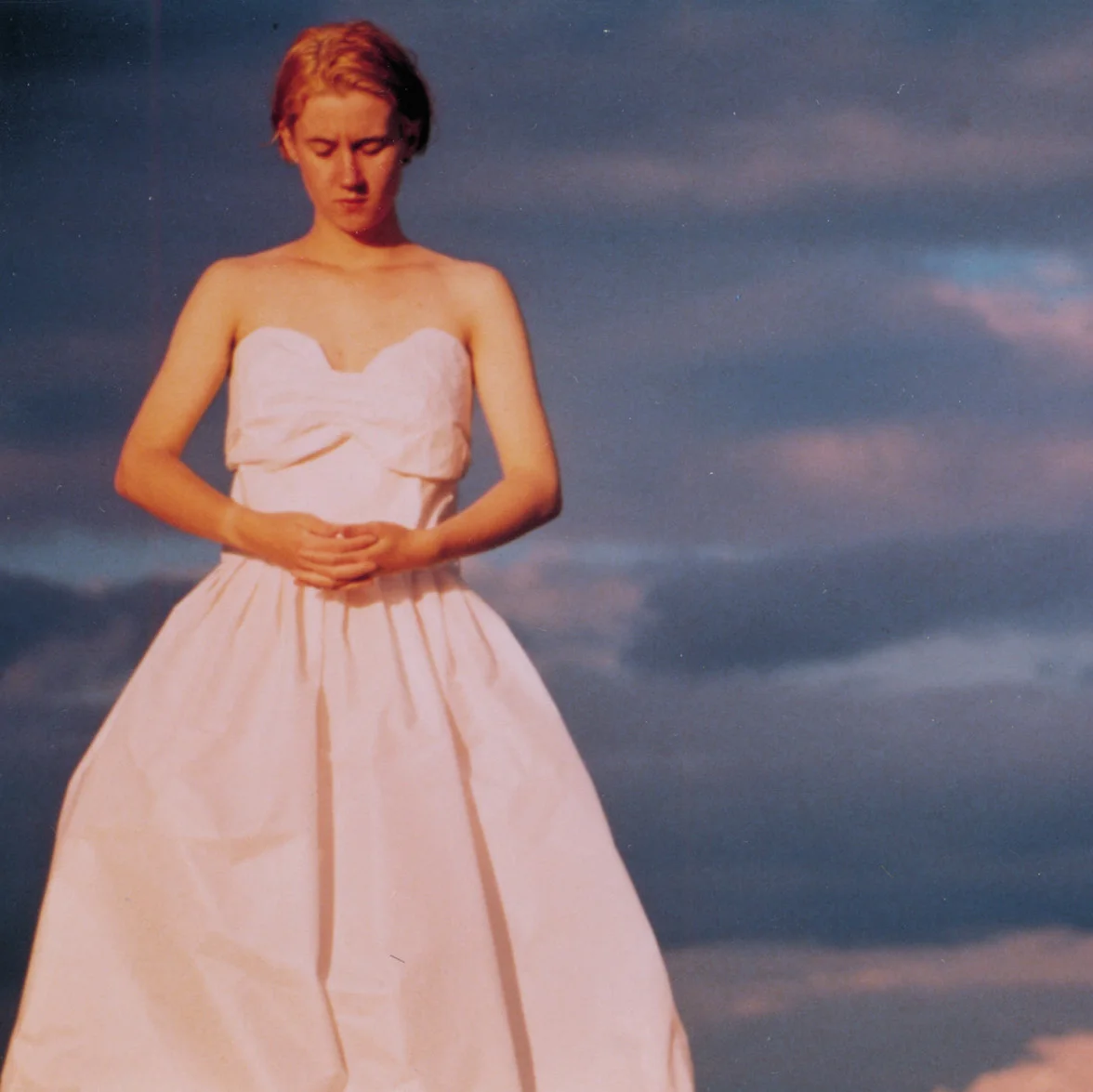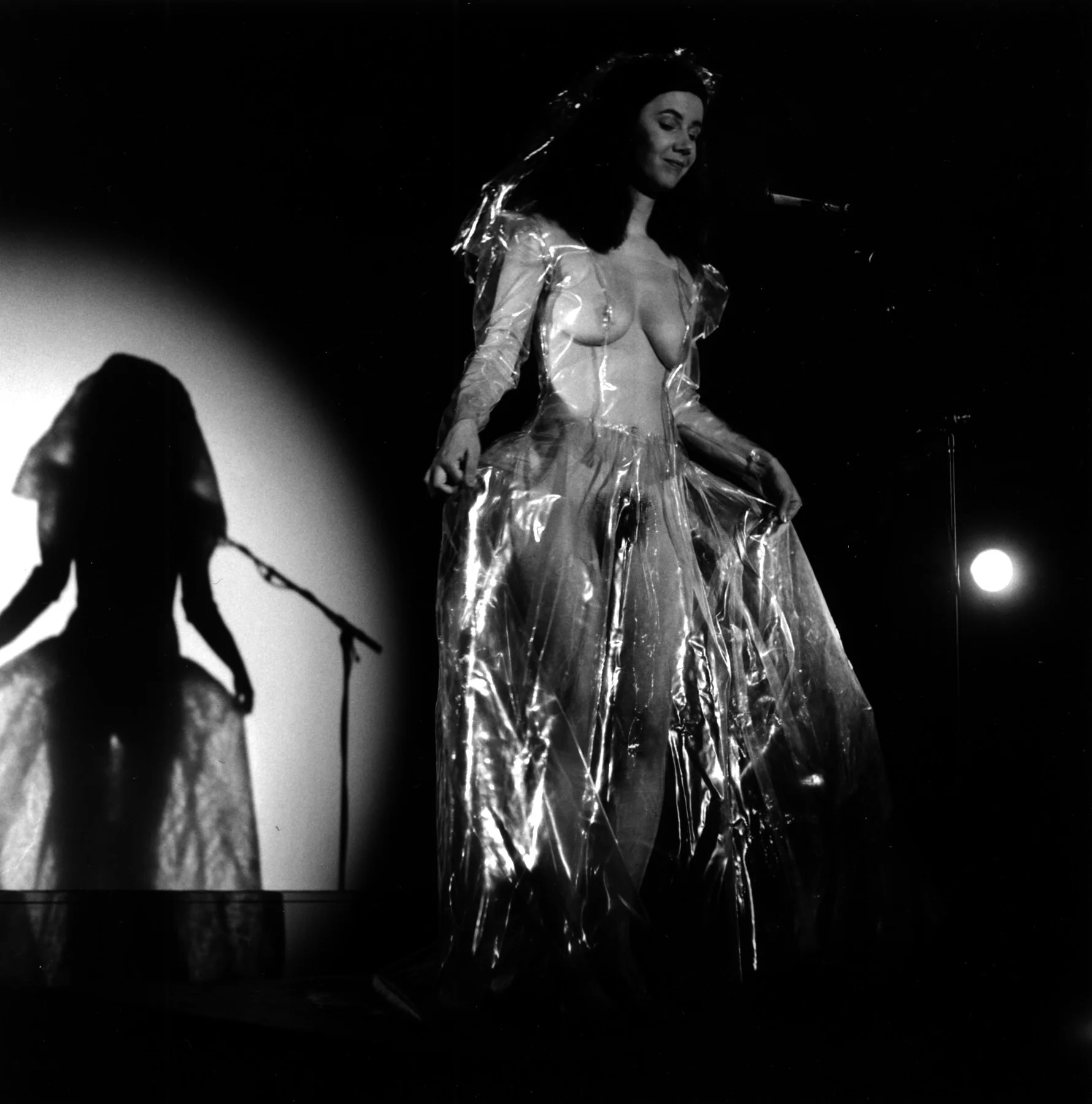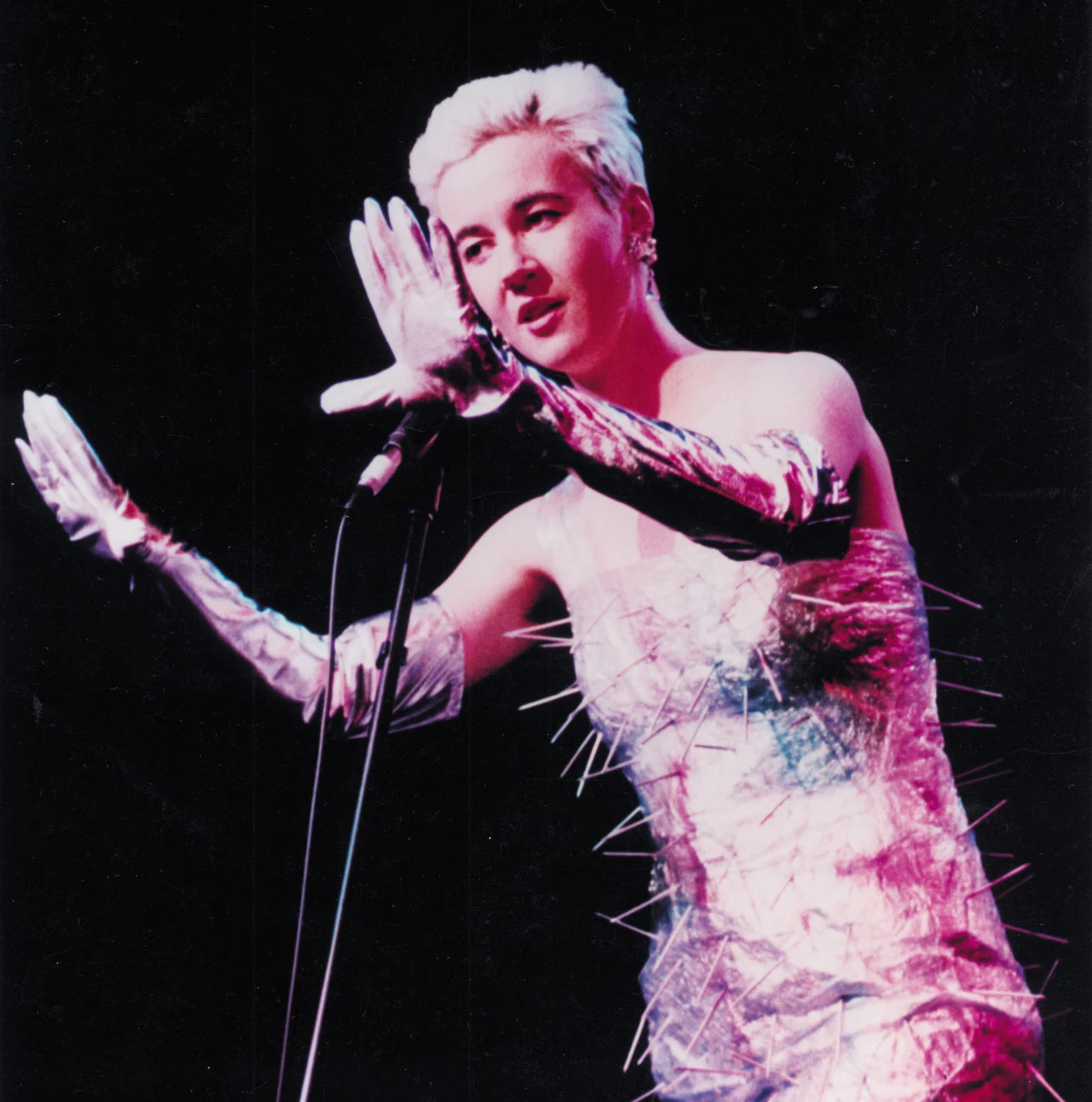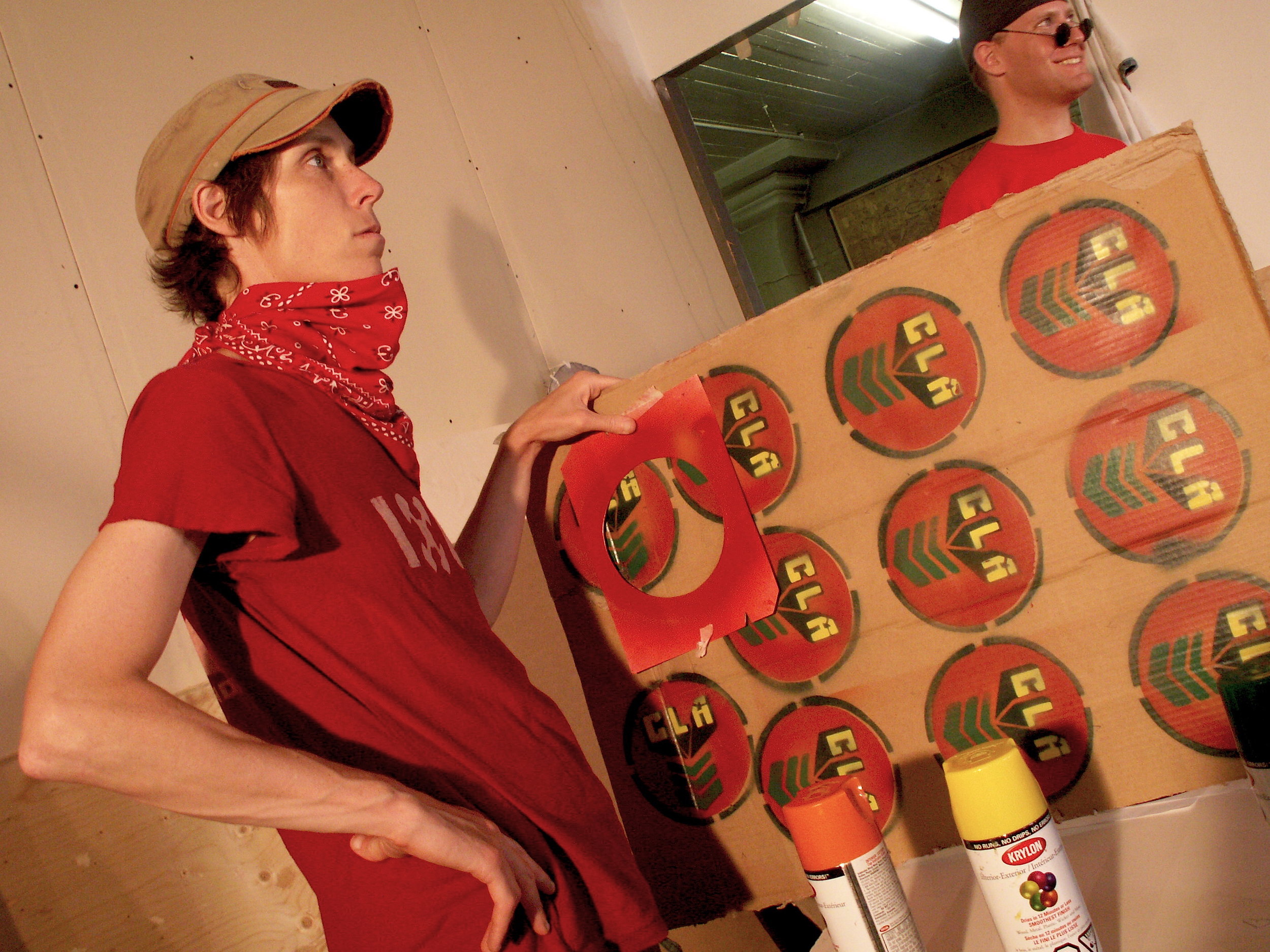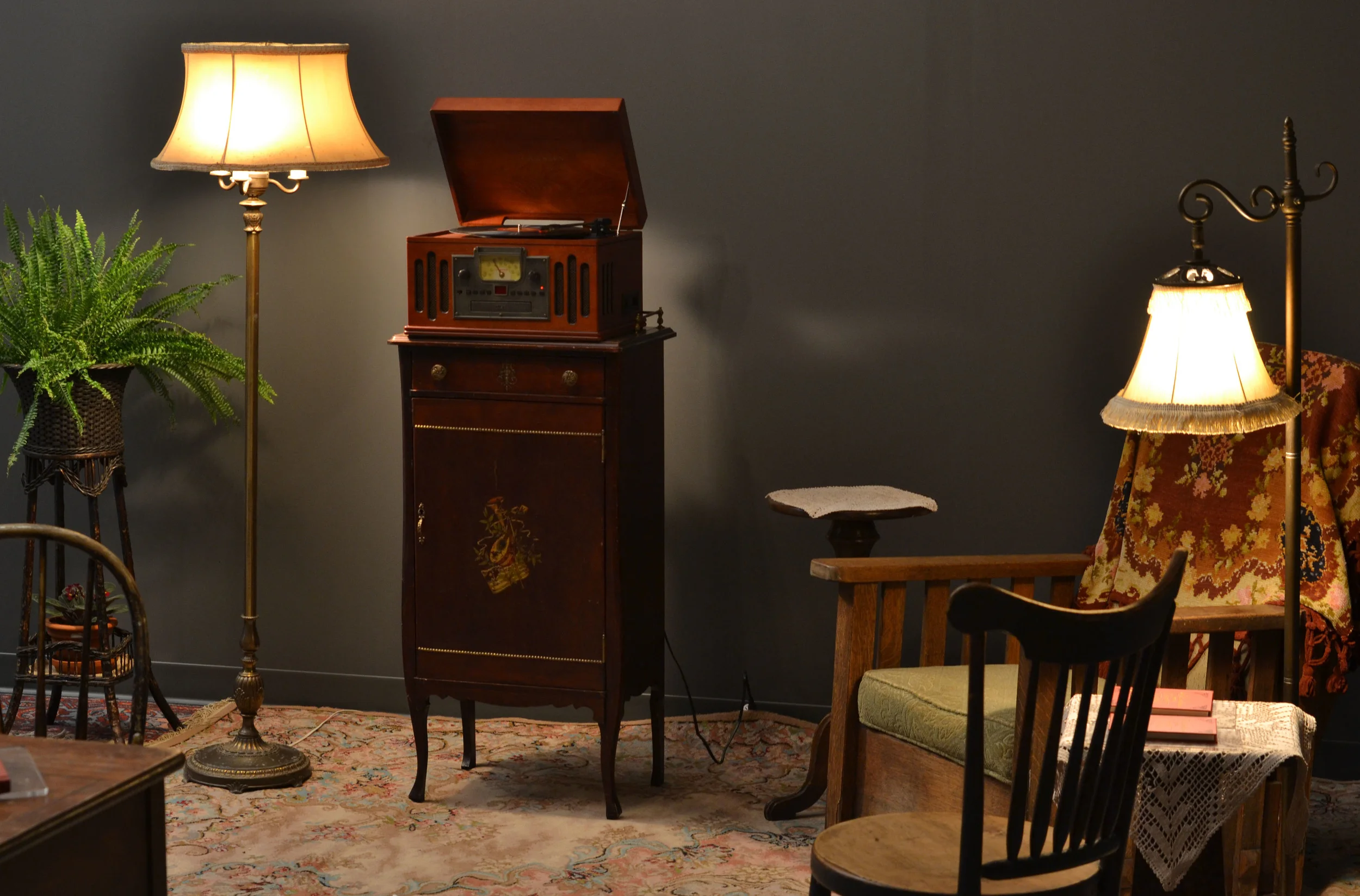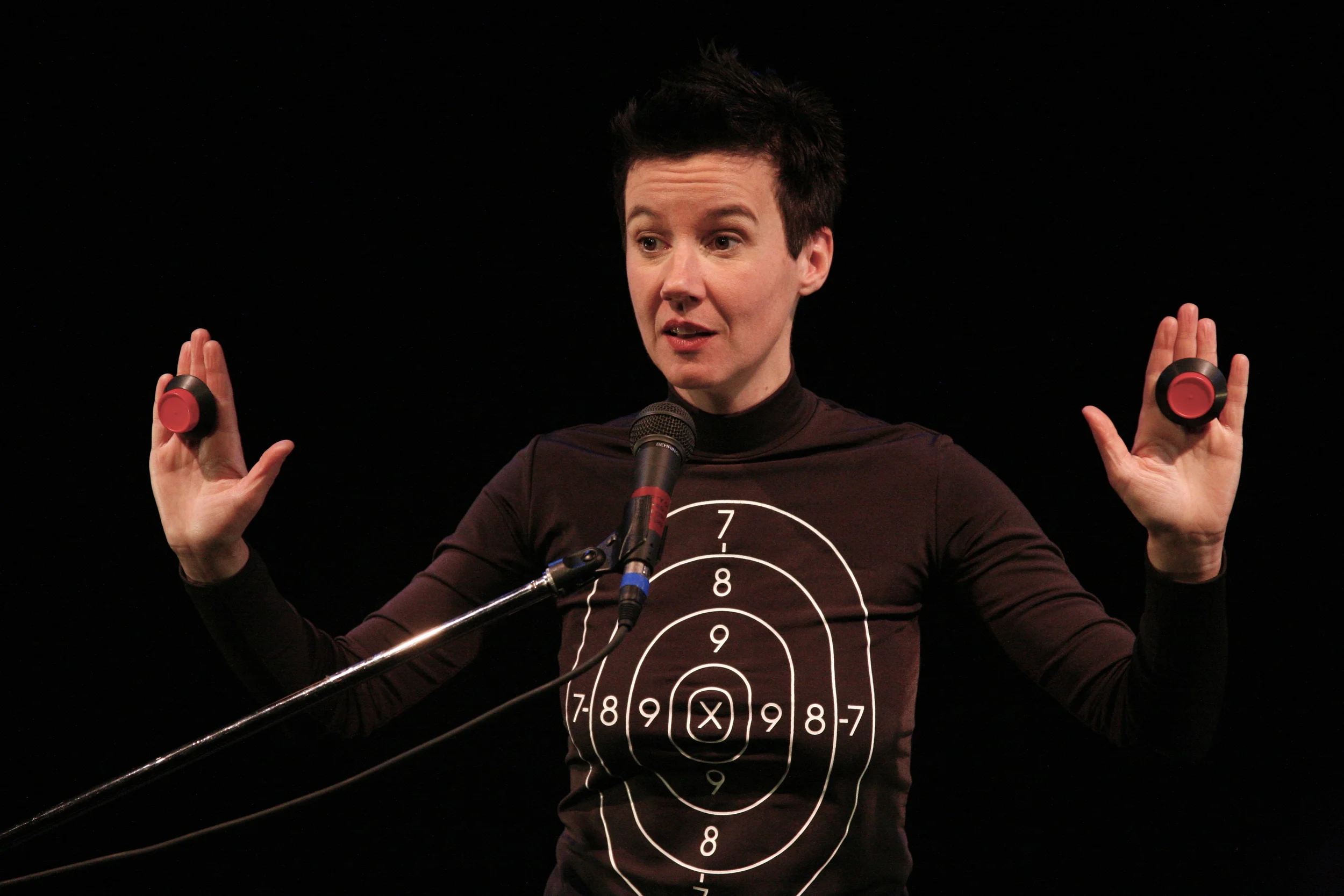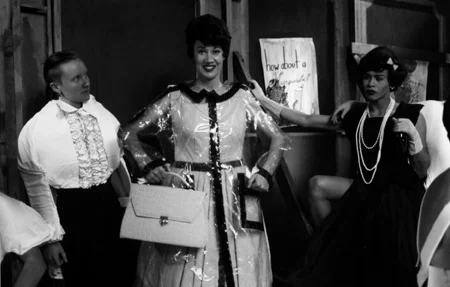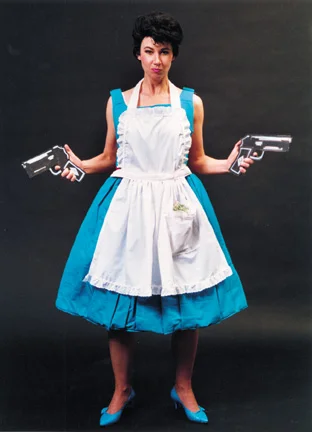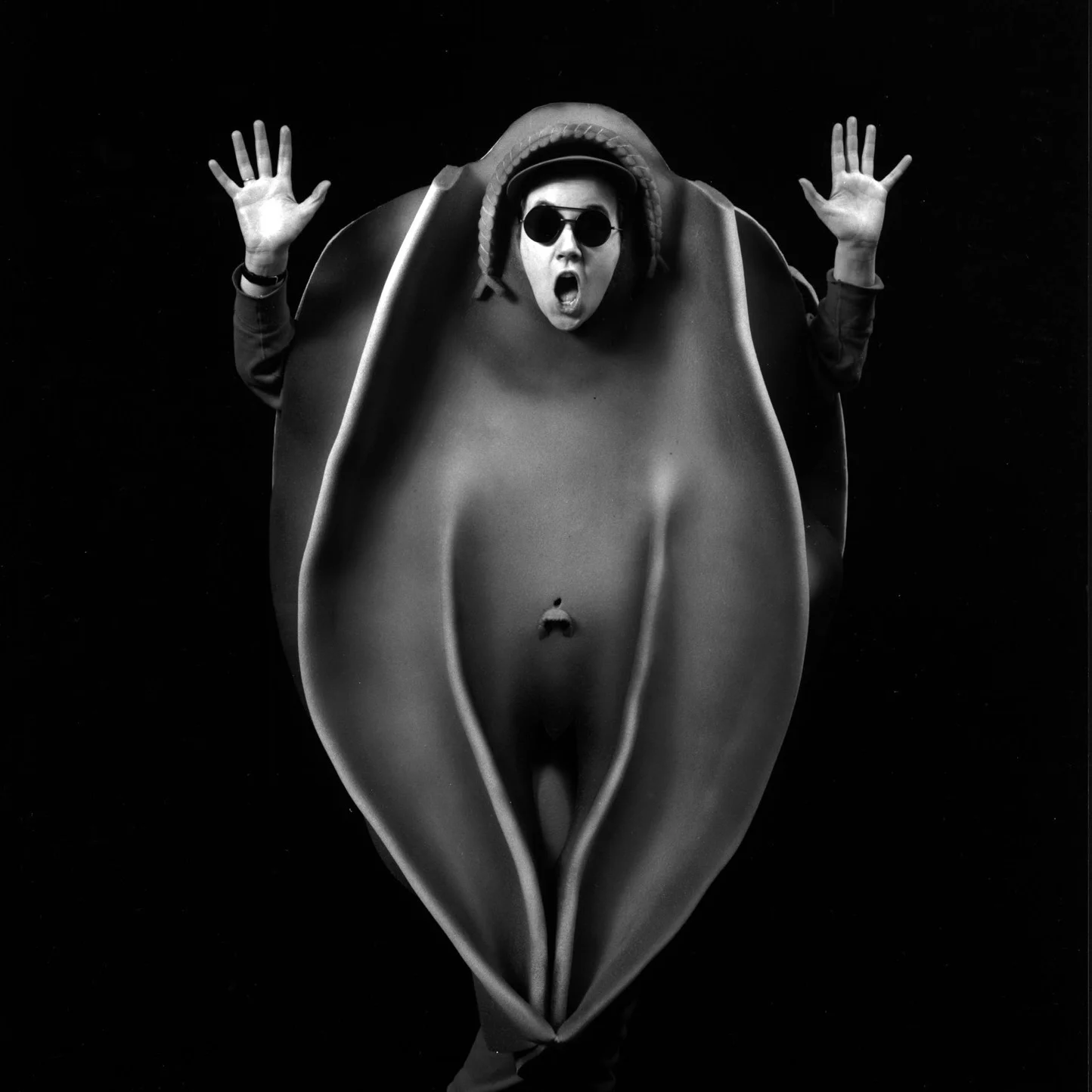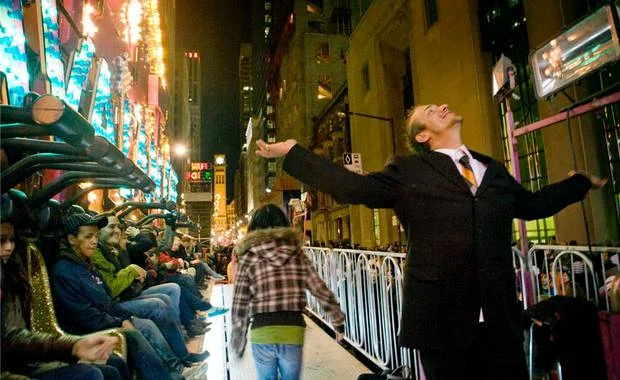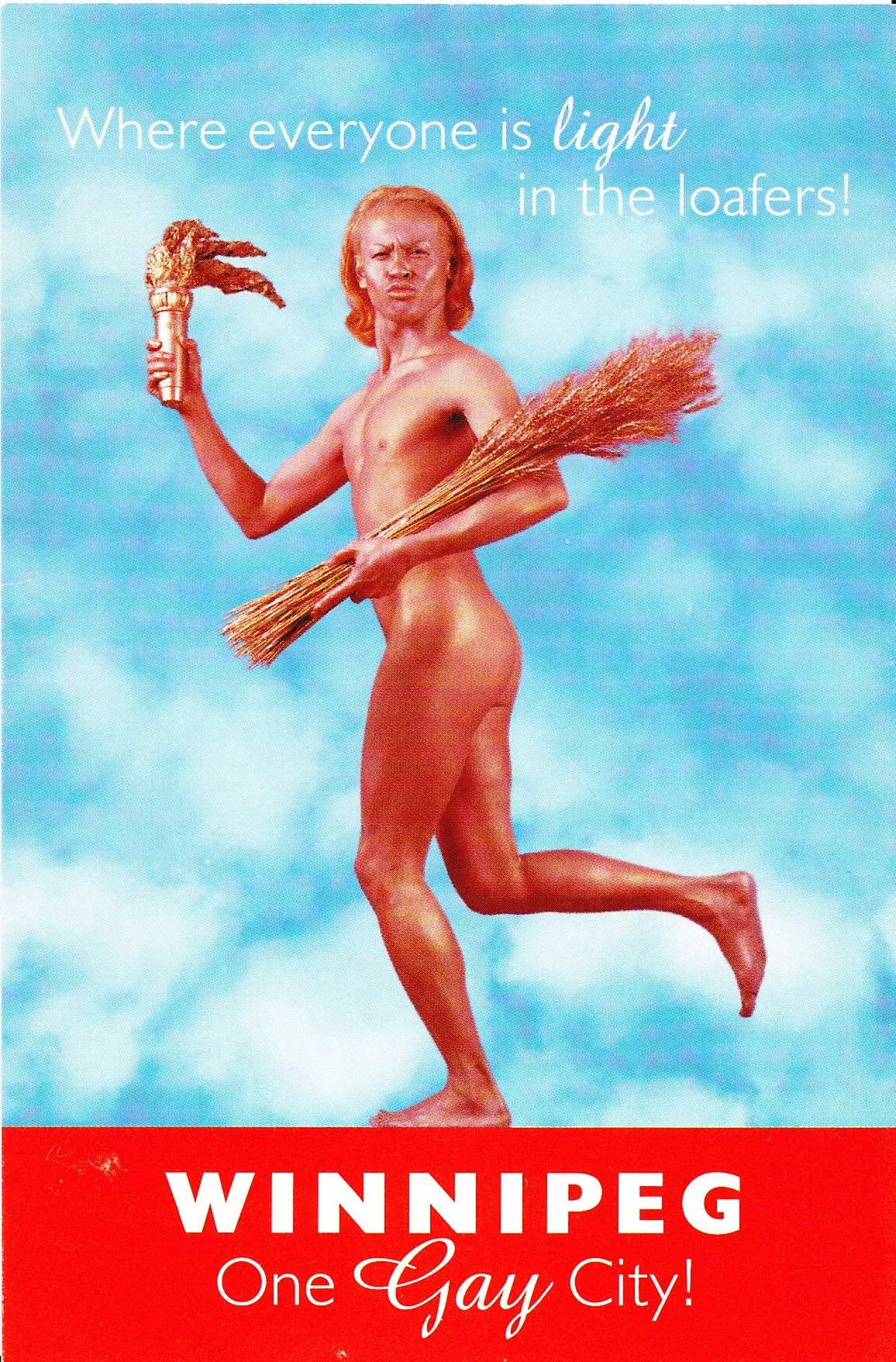The Dress Series (1989-1996), a group of performances that explore the dress as the female ceremonial costume and icon of femininity. In these pieces, cloth is replaced by unlikely materials, creating juxtaposition, new meanings and upending expectations. All costumes fabricated by Dempsey and Millan.
In Arborite Housedress, the pro/antagonist defends herself against racial and economic difference by clothing herself in the domestic architecture of the times: the house/dress is her shimmering, clean fortress and her prison. Throughout the piece she reveals her fears (such as gravity, or the fear that “parts of my dangerously sagging self might end up in bad neighborhoods”) and her fantasies (border town romances, getting down with dirt, and the elimination of her family, so she will have time to devote herself more fully to being a homemaker). The wearable sculpture/costume has been exhibited at many art galleries and has been purchased by The Winnipeg Art Gallery as part of their permanent collection.
“Have you ever noticed that if you wash the floor in the morning, by nightfall it looks just the same as before you started? That you can do all of the dishes, and in a matter of hours someone has gone and dirtied them again? That children are little grime magnets, picking up all manner of stubborn stains and bringing them home again? Well, I've been thinking. If I could get rid of my family, it would effectively cut my work load by 60%.”
The Dress: wood, laminate, chrome kitchen hardware, screws, cloth, Velcro.
Duration: 25 minutes
First performed: February 1994, Walter Phillips Gallery, Banff Centre for the Arts, Banff, Alberta
Photos by Sheila Spence
https://vimeo.com/131843342
In Glass Madonna the world-weary mother of God proffers wry advice and sage warnings from behind her stained glass dress. Fashioned like a two-dimensional carnival cutout with holes for her hands and head, the dress is a colourful and explicit rendering of the Virgin Mary’s familiar garment, with a special peek-a-boo panel of clear glass to reveal the root of the Madonna’s fame: her 2000 year-old hymen. In her never-the-same-twice visitations, Mary comments on love, service, and the men in her life.
“When he comes to you on a dream-filled night, sends his angels to honk his horn at your door, don’t be home.”
The Dress: stained glass, leading, patina, oak, stain, hardware
Duration: 20 minutes
First performed: February 1994, Walter Phillips Gallery, The Banff Centre for the Arts, Banff, Alberta (evolved from earlier performance piece The Plaster Virgin, 1992)
Photo The Banff Centre
In Object/Subject of Desire the central visual element in this performance is a large ball gown, constructed of crisp white paper, reminiscent of a debutante gown. Translucent and stiff, fragile yet unyielding, the dress rustles noisily as Dempsey moves and speaks.
Within this costume the many complexities of desire are discussed, including the many ways desire can be negated. The purity and innocence of the dress, the open expression of "wanting", and the sweetness of delivery, together create an assumption that the object of affection discussed is the traditional heterosexual partner. However, these cultural assumptions are confronted during the last section of the piece, as she finally, explicitly, reveals the carnality of her desire for another woman.
“I want you, to want me. I want you to want me, even though I don't really want you. I don't want you at all, but I want everyone else to. I want everyone else to want you, but I don't want you to want anyone else but me. All I want is your want.”
The Dress: vellum, packing tape, Velcro
Duration: 5 minutes
First performed: Red Deer College, Alberta, December 1988 (earlier version performed in 1987 before Dempsey began collaboration with Millan)
Photo by Lorri Millan
https://vimeo.com/131476697
In Plastic Bride, the performer wears an iconic wedding gown, the classic raiment of femininity, virginity and promise. However, the gown’s intended meaning is transformed by its construction, from veil to train, of clear vinyl. The material encases the bride suggesting more clinical references to body bags and scientific specimens, or commodities bagged and displayed for purchase. Disturbing, dream-like and funny, love and fashion, desire and denial are performed within the gown’s unforgiving folds.
“You have gone shopping with a friend, your sister or even your own mother, and been told, ‘It's perfect. It's you. It's a knockout,’ only to find out later that it's a funeral, not a wedding. It's July, not December. You’re a nurse, not an aviator.”
The Dress: clear vinyl, fishing line, buttons
Duration: 20 minutes
First performed: November 1994, University of Winnipeg Students Association, Winnipeg, Manitoba
An off-the-shoulder evening gown is the symbol for the sophisticated, “proper” lady. However, in The Thin Skin of Normal formal wear is created out of Saran Wrap, pierced with outward pointing, 4" roofing nails. The costume references that tome of enforced femininity, “The Total Woman”, which advised women of the seventies that to keep their marriage alive, they should greet their husbands, arriving home from a hard days work, at the door, wearing only cling wrap. The long nails rupture both this concept and the surface of the garment, and inspire the performance text that angrily and ironically confronts the absurdity of gender role definitions.
“2000 years of patriarchy haven’t dampened my sense of style. When I get dressed in the morning, I’m doing more than covering a little original sin.”
The Dress: cling wrap, roofing nails, packing tape, zipper
Duration: 10 minutes
First performed: October 1993, West End Cultural Centre, Winnipeg, Manitoba

